Self-Rescue (2nd Edition) Book Review
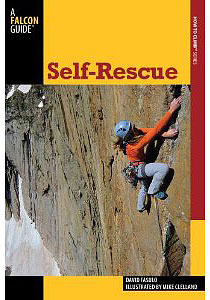 If you climb long enough, you’ll probably be faced with a self-rescue scenario involving yourself or someone else you encounter. Maybe it’s a bad fall, ripping some gear or hitting a ledge. Or, perhaps you’re fortunate enough to avoid witnessing an accident, but you’re faced with a challenging scenario when you decide to impress the lady you love by taking her overweight, video game playing brother out for an “easy” multi-pitch climb.
If you climb long enough, you’ll probably be faced with a self-rescue scenario involving yourself or someone else you encounter. Maybe it’s a bad fall, ripping some gear or hitting a ledge. Or, perhaps you’re fortunate enough to avoid witnessing an accident, but you’re faced with a challenging scenario when you decide to impress the lady you love by taking her overweight, video game playing brother out for an “easy” multi-pitch climb.
A good understanding of self-rescue techniques can go a long way in helping you climb safely for a lifetime, and you’ll also be prepared for any unfortunate accident you might come across. David Fasulo’s freshly updated second edition of Self-Rescue, from Falcon Guides, is a great resource to study from and keep on hand as a reference.
The first edition of Self-Rescue was originally printed in 1996, and became a standard resource for climbers and instructors. Since then, techniques and approaches to self-rescue have evolved, and the author has done extensive research from the best experts in the field to update this important book. The result is carefully organized, meticulously written, and flush with pictures and diagrams to help teach the many techniques and concepts within it.
The book features detailed and clear illustrations by noted artist Mike Clelland, supported by pictures of people practicing the techniques, or of actual rescue scenarios. The combination of the two creates a helpful visual aid in understanding the many concepts and techniques taught.
I really appreciate the way the book is organized to touch upon different subjects, with individual chapters for topics such as knots and hitches, toprope rescue, and terrain assessment. The organization of the book helps it serve as a great resource to refer to when studying or learning different techniques. It also helps in understanding where and why different techniques would be used.
I also liked the way the book spends time discussing different tools or gear used in rescue situations, for self-rescue as well as large-scale professional search and rescue teams. With pictures and descriptions, it highlights the use of each and helps give the reader a better understanding of how big SAR teams pull off the amazing rescues they perform in challenging places like Yosemite Valley.
The author clearly spent a lot of time detailing the concepts and techniques in the book and hence, it is a very thorough and authoritative resource. The book includes a skills assessment, with various tests you can practice on your own, and includes a detailed bibliography for further study. In my reading of the book, I could only find small, relatively insignificant things that could be improved upon or added to. Basically, what you need to know is in there and it is well described and demonstrated.
Finally, the book is flush with real stories of accidents and rescues. Similar to reading Accidents in North American Mountaineering, these stories are often helpful to learn what can happen when things go wrong and analyzing an appropriate course of action.
I highly recommend checking out Self-Rescue, it’s a book that can benefit any climber, and serve as a great resource to help you avoid, or get out of, tricky situations in the future.
Look for future SplitterChoss blog posts with how-to tips on some of the techniques described in the book, or take a self-rescue class to learn hands-on with Glenwood Climbing Guides, owned by Mike Schneiter.
One Response to Self-Rescue (2nd Edition) Book Review
Bulldog Creek Dog Walk (IV WI 4+)
Hayden Carpenter and Tom Bohanon recently repeated an obscure ice climb on the south side of Mt Sopris. Given a brief mention in Jack Robert’s ice guide, Bulldog Creek Walk is described as being 100 meters of WI 4. What they found was seven pitches of ice in a remote setting that makes for one […]
Connect with Us








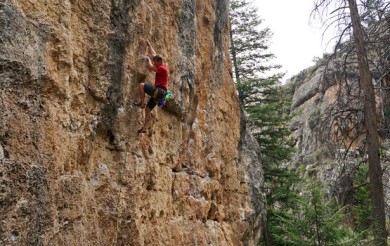
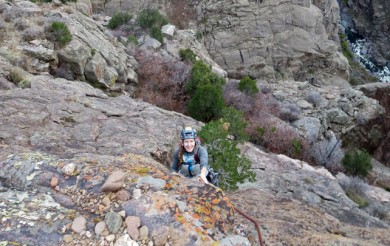
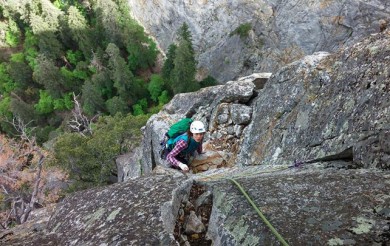
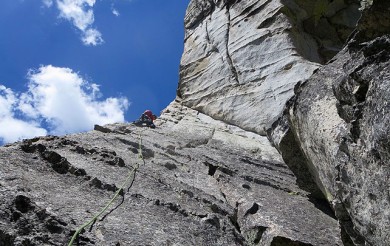



Thanks for the book review. I now have a better survival reference than Man vs. Wild. I am always dragging my inexperienced friends out on alpine and sport climbing excursions so this is perfect for me.